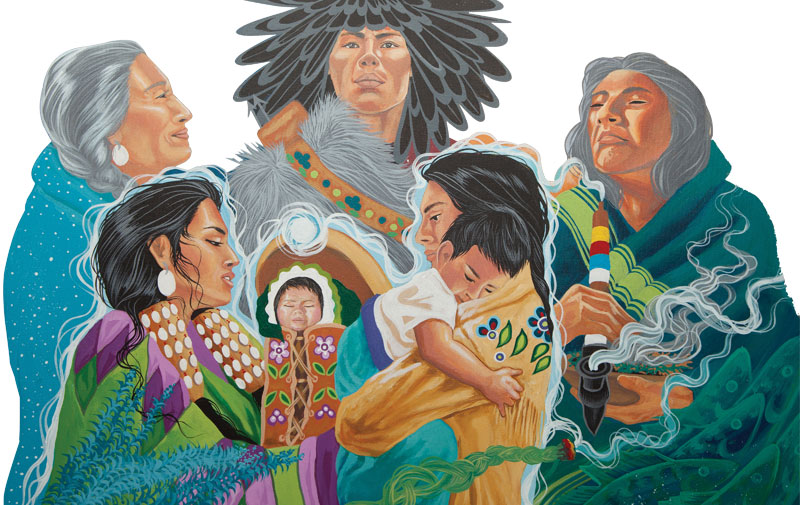September 2015 – Nelson House, Manitoba
Family and Community Wellness Centre may well be “ahead of the curve” when it comes to services and innovative approaches to care for children involved in apprehension or potential foster cases.
TRC Finds Foster System Lacking
The Truth and Reconciliation Commission (TRC) concluded recently, after six years of research, that the treatment of aboriginal people in residential schools amounted to “cultural genocide.” Despite the fact that the last institution closed in 1996, survivors say that the country’s foster system is having a similarly destructive effect on the community. The Wellness
Centre’s Intervention and Removal of Parent Program is leading the way to alternative care, and has pioneered a new approach for both parent and child that will keep children out of foster care.
The TRC report divides its 94 recommendations into several categories, including child welfare, health and education. It recommends welfare organizations keep aboriginal families together whenever possible. It also demands that such placements be “culturally appropriate.” Once again the Wellness Centre has been committed to a child/parent care program that does just that.
There are currently an estimated 30,000 aboriginal children in foster care in Canada, which is three times more than the number of students at the height of the residential school era. One proposal is to move the parents out of the home – and new caregivers in – rather than displace the children. Counselling would also be provided to the parents.
Removing Parent From Home an Option to Healing
The Wellness Centre in Nelson House first began work on a new way to approach child apprehension in 2001 and started exploring innovative ways to reduce the disruption and trauma to the child and improve community Mithwayawin (wellness).
Today, it remains a fact, there are more than 10,000 children in Manitoba who are wards of Child and Family Services (CFS). A vast majority of these youth are in foster care and most are
Aboriginal. The Centre’s approach and program provide an alternate method to care for children that are influenced by child apprehension – where the child is at risk.
Nisichawayasihk Cree Nation (NCN) has the benefit of a holistic-care facility directly in the community of Nelson House. Care and programs like the Intervention and Removal of Parent, Circle of Care and Rediscovery of Families are instrumental in providing a broad approach to healing , not only for the individuals involved but also the community that embraces them.
The Centre’s holistic approach removes the parent(s) from the home to help not only the child but also the parent(s) to seek needed counselling , therapy and an understanding of their responsibilities. Through the Circle of Care and Rediscovery of Families program, they also assist the family in rediscovering methods to help them thrive and grow by reconnecting them to their Indigenous traditions and culture. These services have been successfully provided for the Nelson House community for more than a decade and are generating great interest from other First Nations and CFS agencies – now adopting similar programs, based on this model.
The catalyst for the development of the program came after a tragic event in 2001 when a 15-year old girl in care died of alcohol poisoning. Immediately, at that time, it was decided to bring the family and community together to discuss the trauma and to deal with the unresolved grief, in the hope that it would not carry on into the future. The Intervention and Removal of Parent Program officially began in 2002 after discussions and the advice of our Ketiyatisak. It was noted that many parents were not being held accountable for their behaviours and actions in the standard model for child apprehension cases.
Better For Child to Remain in Home
The Centre states it is better for children to remain at home. It is well documented; many children feel the blame and have feelings of guilt when they are the ones removed from the situation. This “removal of parent” solution comes directly from Elders, the children themselves and the community and has had proven results over the years.
In the last decade, about 65 parents have been removed and with targeted support, most families have been reunited after a short time in the care program. By listening to community members, building partnerships and remaining committed to the process, these methods and guidelines can be pivotal for the child, family, First Nation and community.
Under the Indian Act, the federal government is responsible for funding health, education, police services and child welfare on reserves. The Canadian Human Rights Commission is expected to soon rule on whether Ottawa is underfunding First Nation child welfare system. Survivors of the Residential Schools say they want government agencies to keep aboriginal children in
their communities, rather than force them into a foster home.

